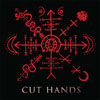 A surprisingly fast follow-up to the Afro Noise I album, Black Mamba already demonstrates an even further evolution of William Bennett's post-Whitehouse career, one that sees his work being utilized in documentaries about drugs and Snoop Lion (formerly Dogg).  While there was an overt intensity to the first album, via the rapid, claustrophobic drumming and dense atmospheres, here things are a bit more understated and pensive, but no less fascinating.
A surprisingly fast follow-up to the Afro Noise I album, Black Mamba already demonstrates an even further evolution of William Bennett's post-Whitehouse career, one that sees his work being utilized in documentaries about drugs and Snoop Lion (formerly Dogg).  While there was an overt intensity to the first album, via the rapid, claustrophobic drumming and dense atmospheres, here things are a bit more understated and pensive, but no less fascinating.
Susan Lawly/Very Friendly
Afro Noise I was a lightening rod for a significant amount of criticism regarding Bennett's appropriation of African and Haitian percussion as being exploitive for a Western artist.While I could never wrap my head around that fully, it felt influenced by those genres without co-opting them as his own.On Black Mamba, this is even less of a potential criticism:the percussion throughout often takes a back seat to layers of spacious synths, but never is it fully out of the picture.
The title track and "Erzulie D'en Tort" are more consistent with the first Cut Hands release, intermingling the different percussive instruments into complex poly-rhythmic tapestries that speed up and slow down with a natural grace and fervent intensity."Brown-Brown" also leans in similar directions, mixing the clattering rhythms together to create an intricate, hypnotic mix.
"Krokodilo," named for a lethal Russian drug (and featured in a recent documentary on the same), is a perfect example of the evolution to be heard on the album:the slower, more sparse rhythms are paired with synth strings that give it an almost Eastern European folk feel, perfectly suiting the subject matter."No Spare No Soul" piles on the African percussion, but mixed with bits of distorted and noisy bits of electronic noise that lead it into more dance floor oriented lands.
The more experimental moments are especially strong as well:both of the Nzambi lamentations have a dramatic, film score quality that stand out as sad, occasionally abrasively shrill moments that expertly convey a variety of moods."Kongo" is a short, wide-open piece that pairs metallic shaking with erratic drum blasts that sound like distant fire from a warlord’s AK.
The opening track is the one that stands out as the most potentially out of place:pulsing tones and hypnotic repetition with a calm, almost robotic female spoken word piece.Originally part of Bennett’s Neuro-Lingusitic Programming project, it is a departure from the otherwise percussion-heavy sounds, but also shows that Cut Hands is not locked into that specific niche either.
Black Mamba is not a drastic departure from Afro Noise I, but comes across as a more nuanced, evolved work that is definitely inspired by indigenous music of Africa, but further cements the notion that this is not an exploitation, but a celebration of the art and culture Bennett has a passion for.With a wider sonic palette that embraces synths and electronics as much as percussion, it’s a less intense, but overall richer experience.
samples:
Read More

